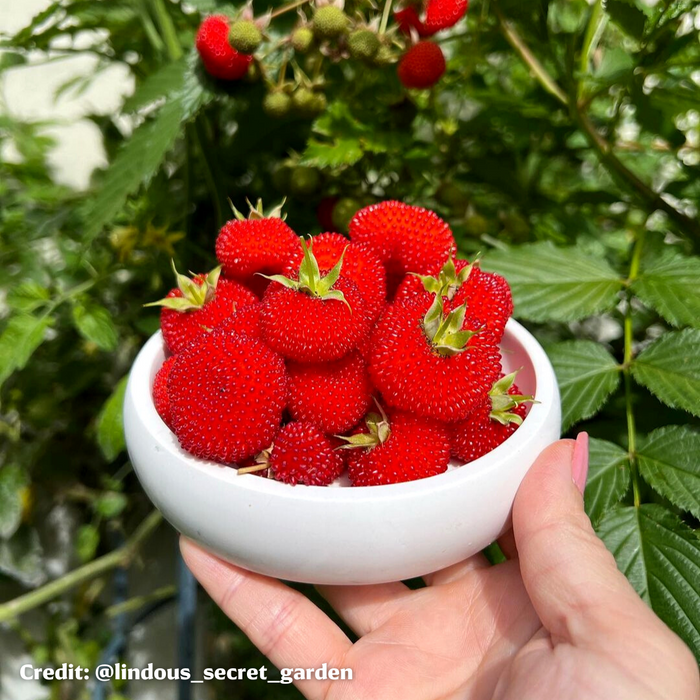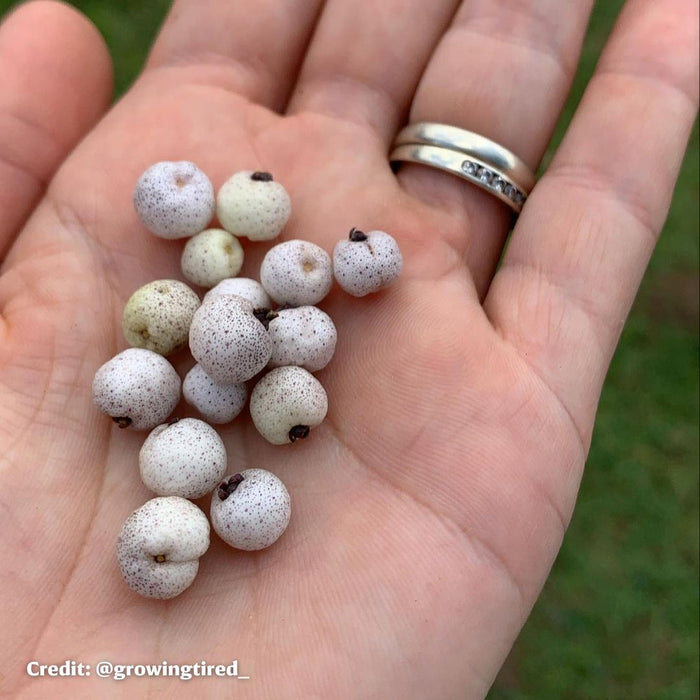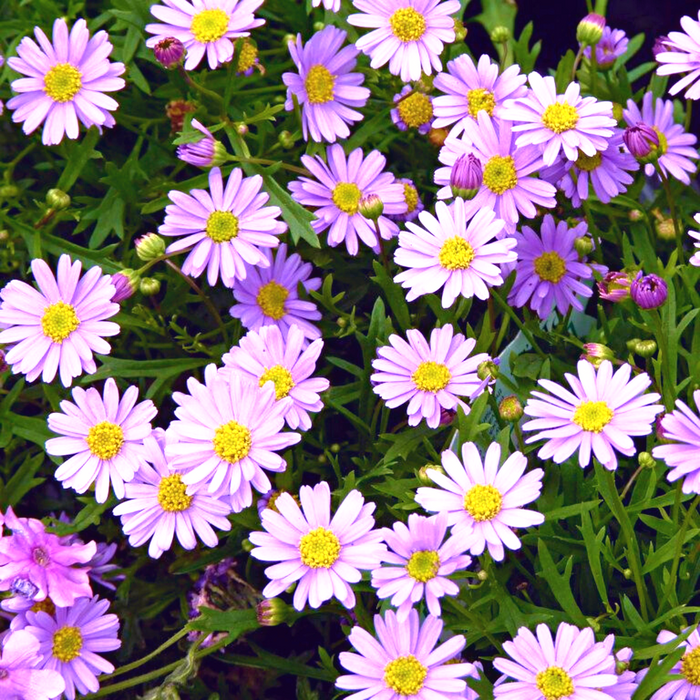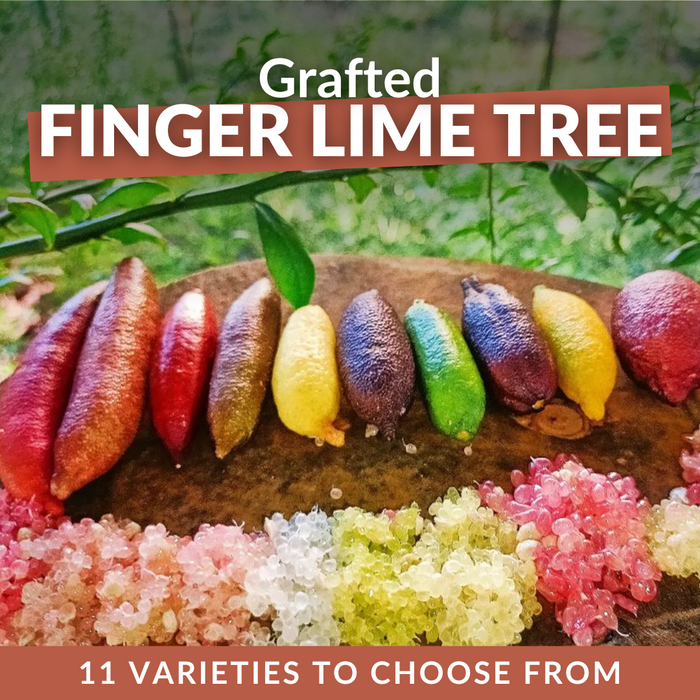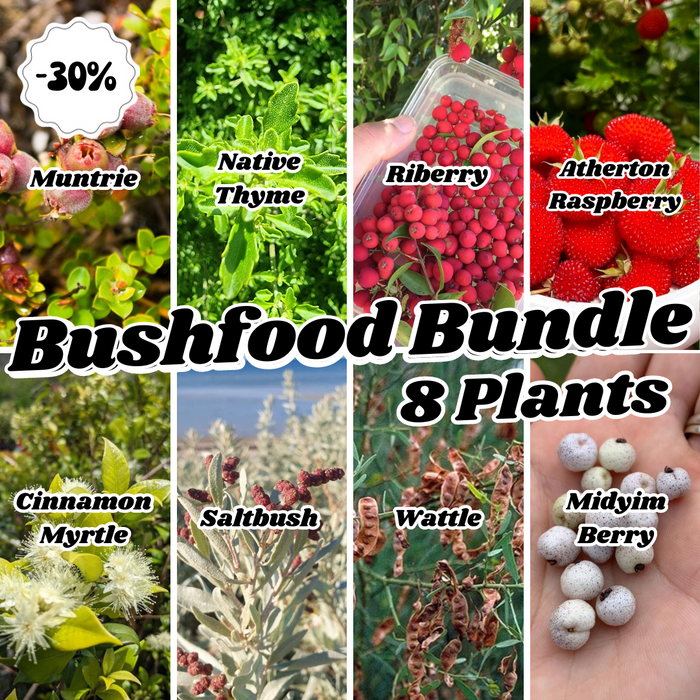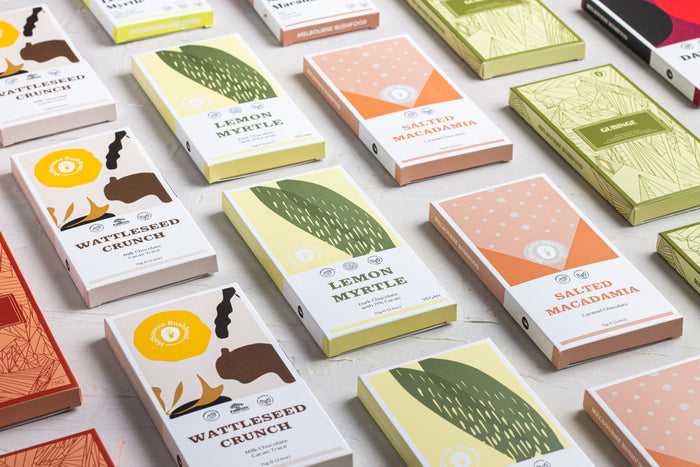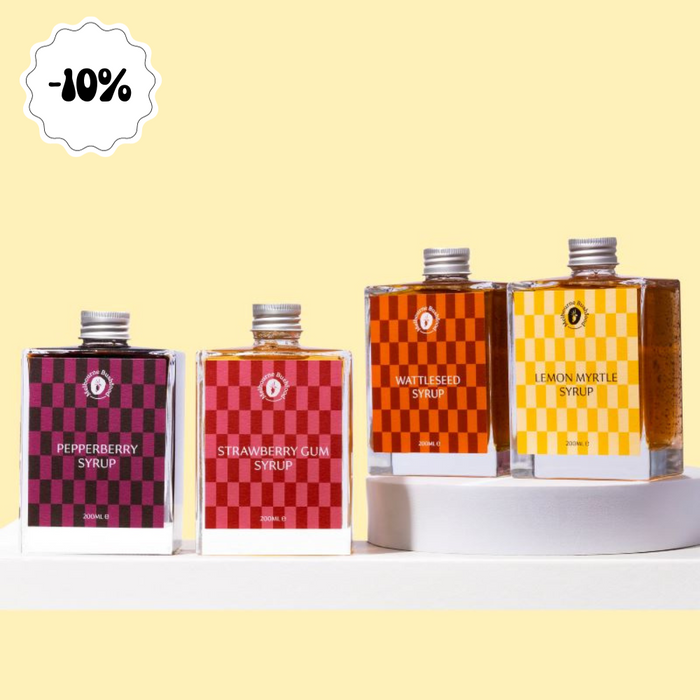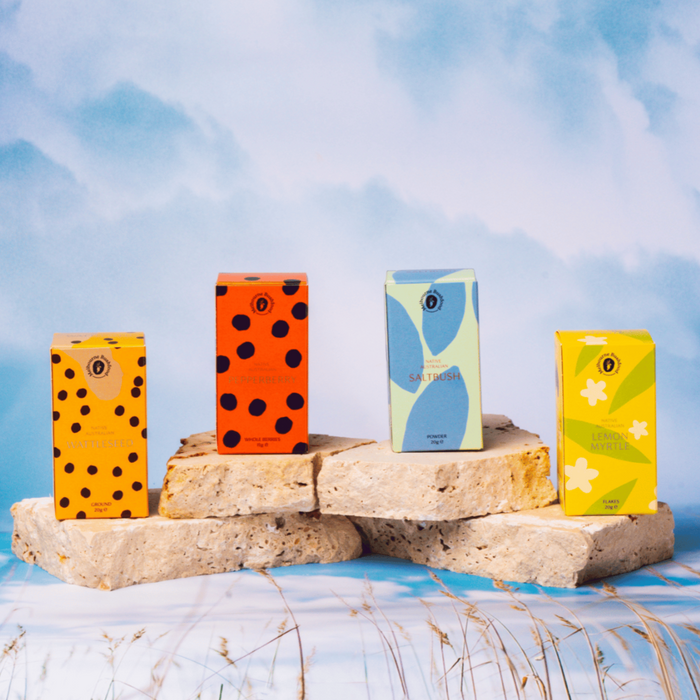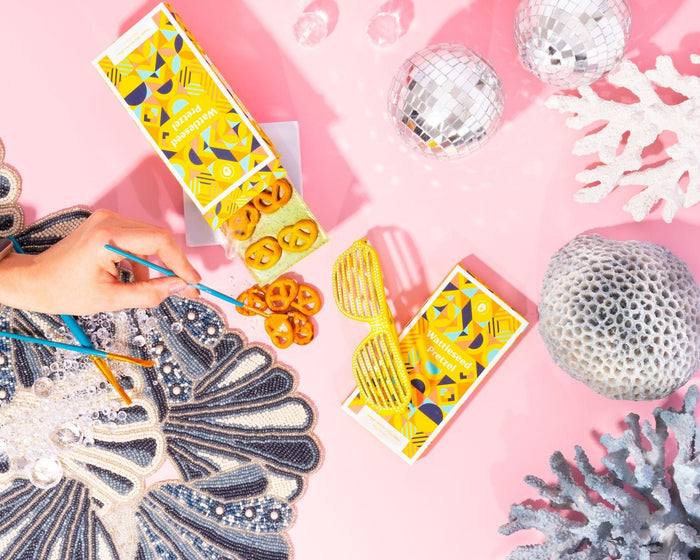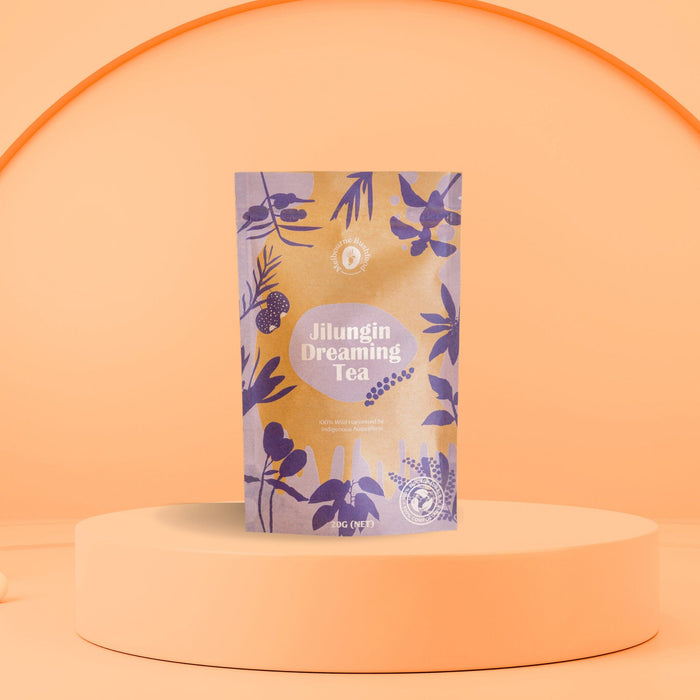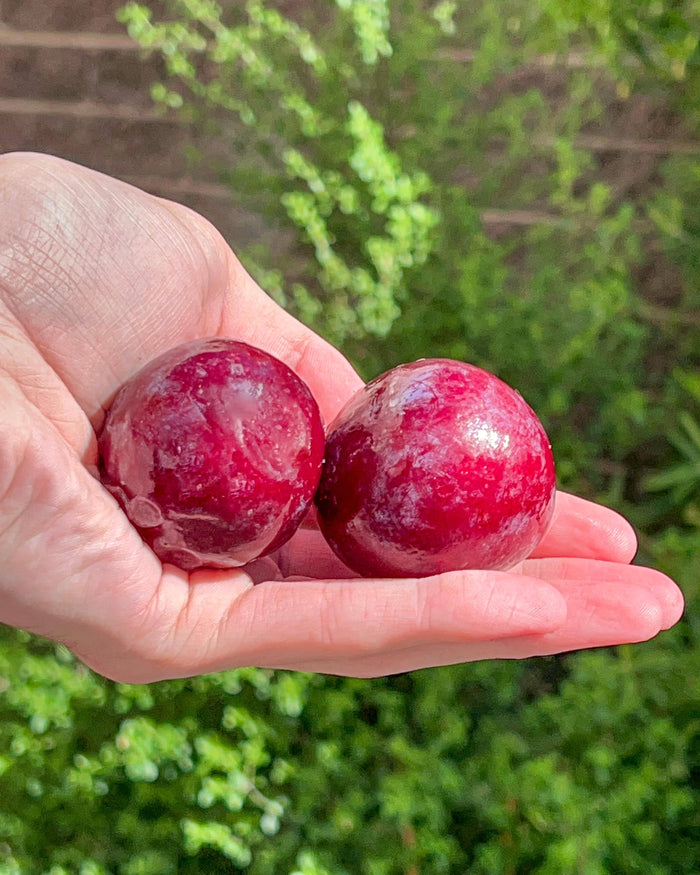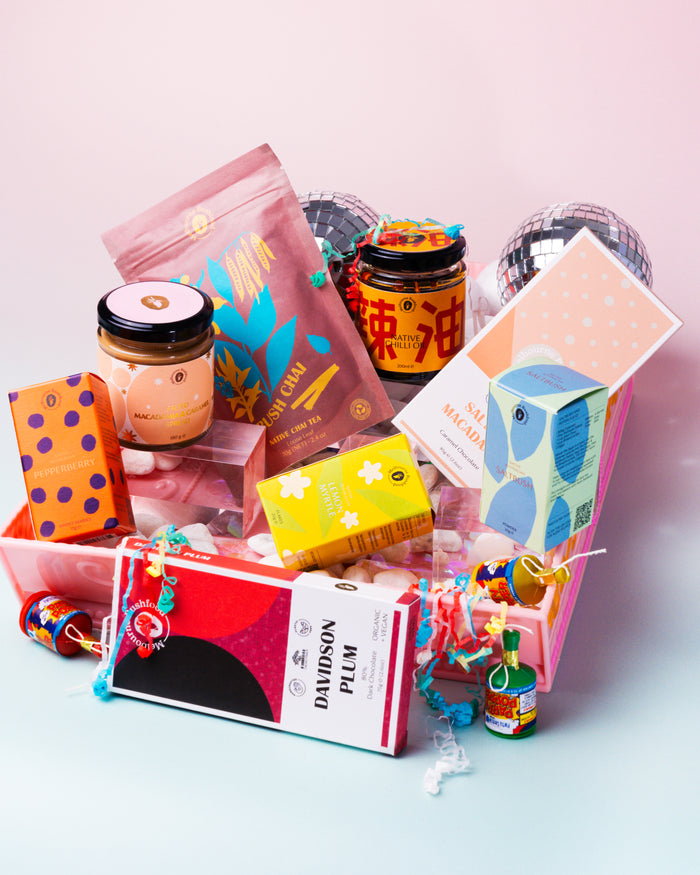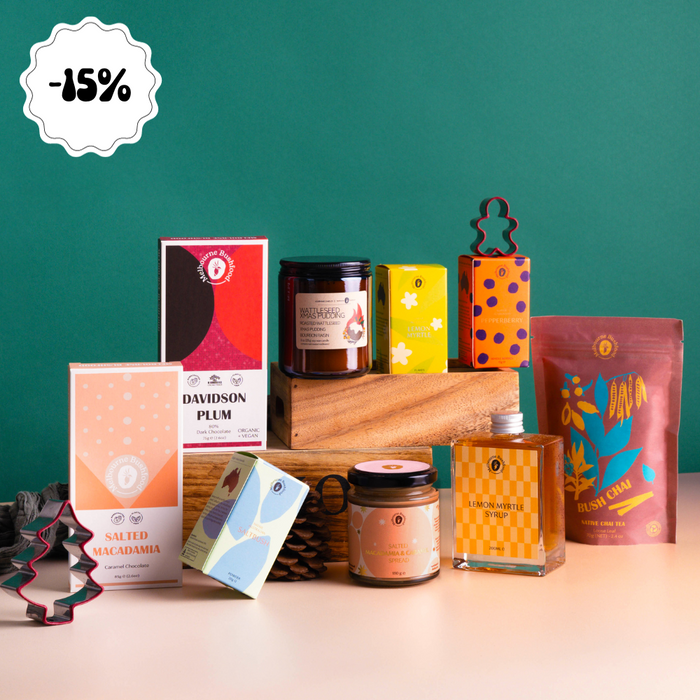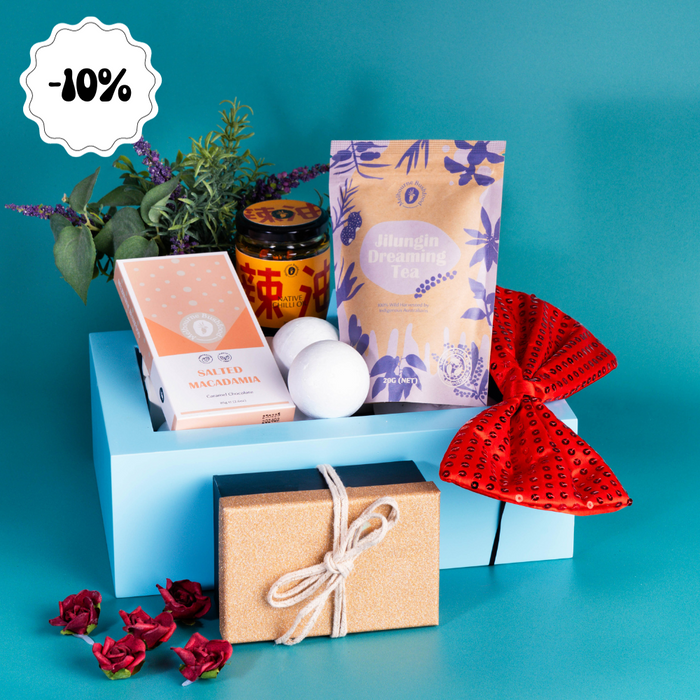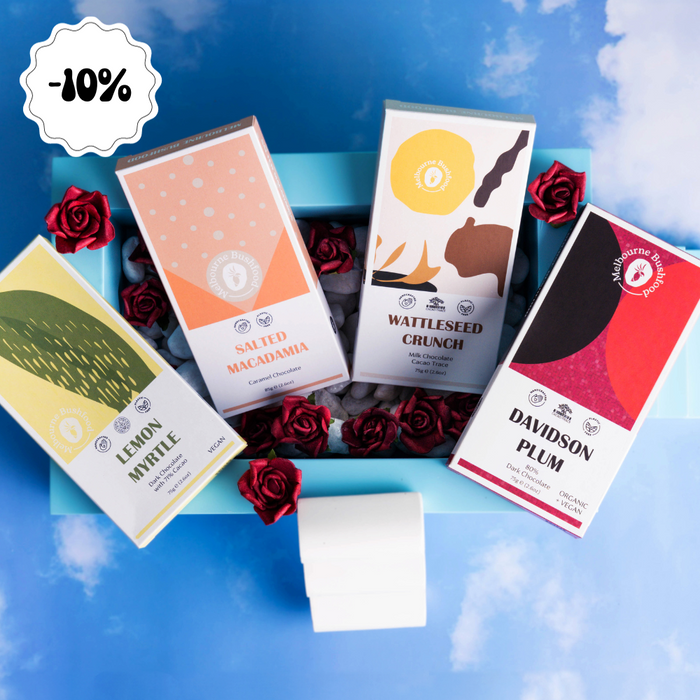

Muntrie Tree - How to Grow Muntries
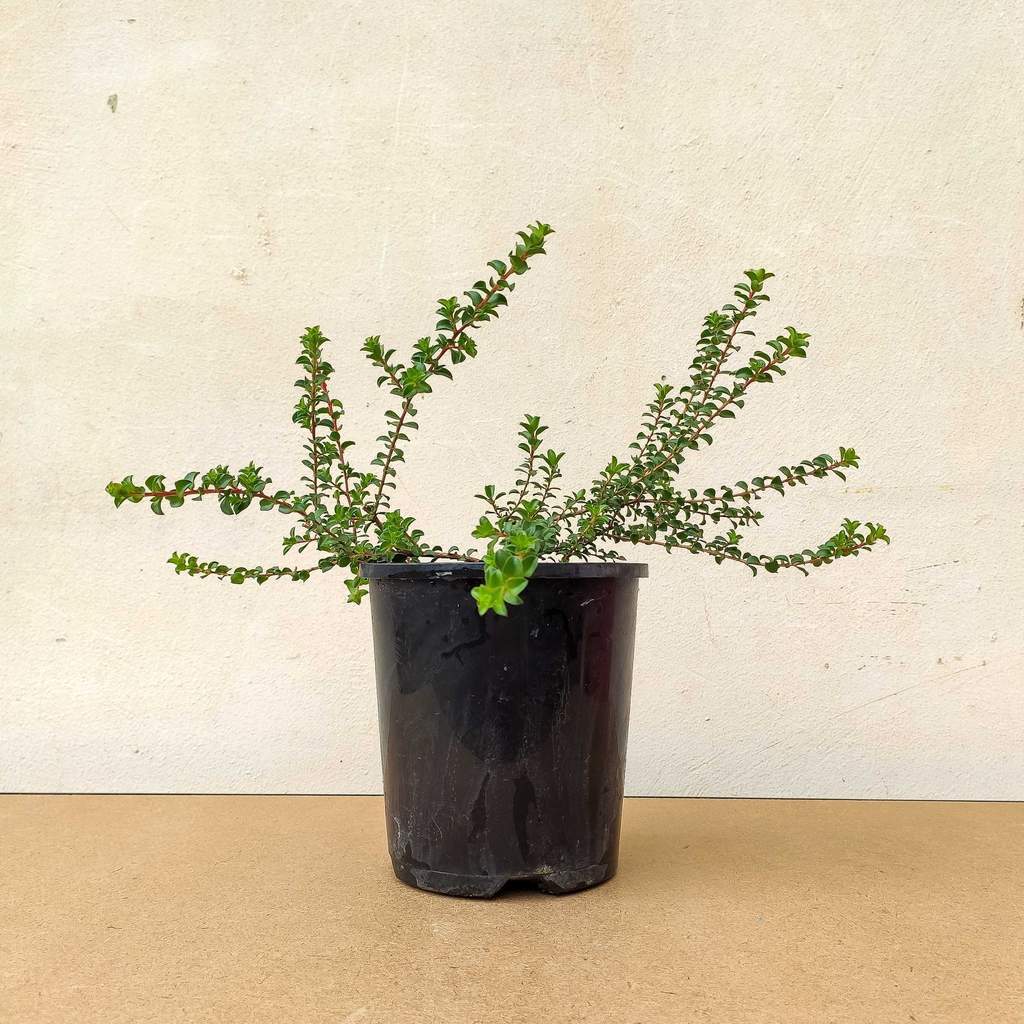
Image from Melbourne Bushfood
Muntries taste like a granny smith apple but with a little bit of eucalyptus. They're sweet, ambrosial, and make an astounding ground cover.
Muntries' woody branches and hardy leaves make them exceptionally drought and pest tolerant. Their toughness makes them ideal for a balcony gardener or someone with little time to maintain a productive garden. After 5 years, one muntrie plant produces KILOS of fruit which sell to restaurants for over $80 per kilo.
Origin
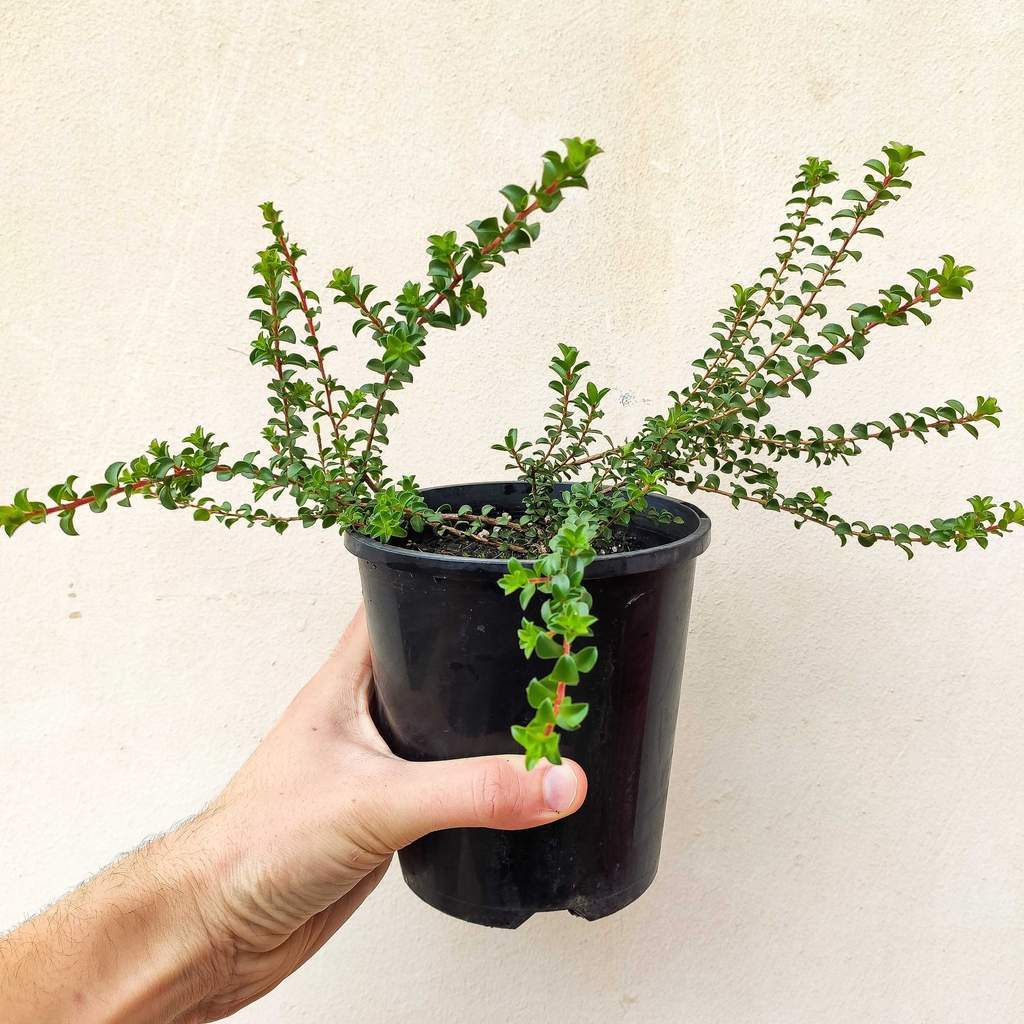
Image from Melbourne Bushfood
Good for:
- Beginners
- Pots
- Garden
- Drought

Water
Drought Tolerant

Sunlight
Full sun/part-shade

Size
30cm high 2m wide
Planting
Planting Muntries
Muntries are a slow growing ground cover. The leaves are arranged alternately and are egg-shaped to elliptic or almost round with a downturned point on the end.
If you’re not the person who spends hours in your garden, this one is a great fit for you. Prefer to have them in hanging pots? Perfect, they’ll be completely at home hanging down. Coastarians and Islanders, this one is precisely for you since Muntries will grow naturally in sandy soils, no trouble at all.
Maintenace
Watering
They’re exceptionally hardy hence drought tolerant, which is one of the reasons they’re preferred in Australian gardens. They thrive in well draining soils that’s moderately acidic to curb the infamous root rot
Fertilizing
After the fruiting season, give them a high quality native fertilizer boost. It will give them a firm footing for those green to red tinged beautiful berries for next season.
Other guides:

